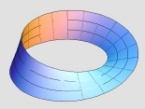The Germans captured many French 75mm field cannons in 1940. They also had captured a great amount of Polish 75mm AP shells that could be used by these weapons. Unfortunately the Polish 75mm AP shells had no tracer. When in 1941 the Soviet T34 showed up the 75mm guns were pressed into anti-tank service. It was found that these had to fire an extraordinary number of shells to score any hits. It took 20 or more per to take out targets. The problem was they could not correct for lack of tracer. They only had the position of where the shell landed to go on.ORIGINAL: James Crowley
My point is that, averagely, adjusted fire should yield a better chance for a hit.
I have never fired a tank gun but I have done a fair amount of shooting with a rifle (a good while ago!). The basic principle, I would have thought, is the same; provided you spotted where the first shot landed, one or two adjustments would usually get you on target. As you say, it may be that the first shot is obscured in some way but generally that principle holds up.
That may feel wrong too but it happened.






 . Oh yeah, cumulative track damage maybe??
. Oh yeah, cumulative track damage maybe??